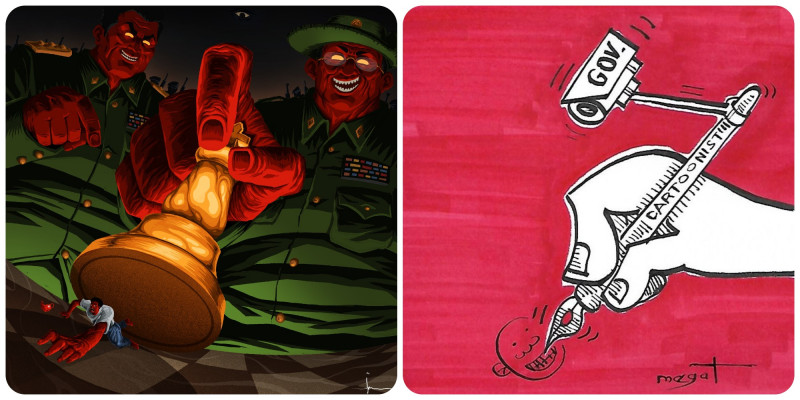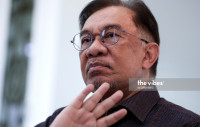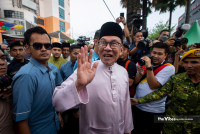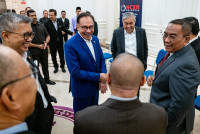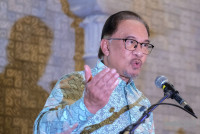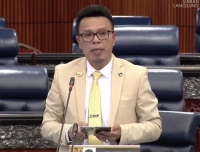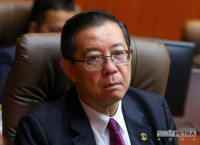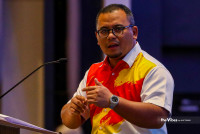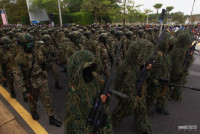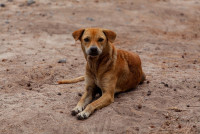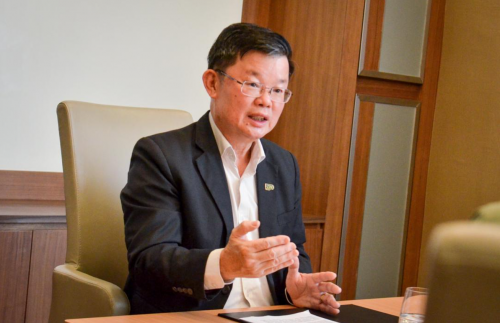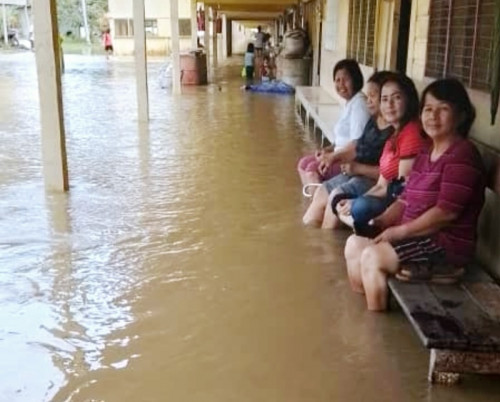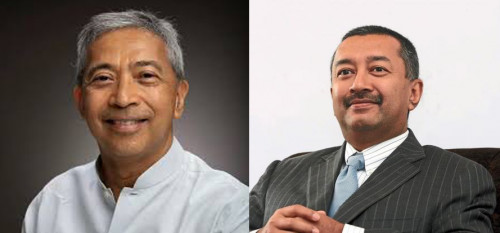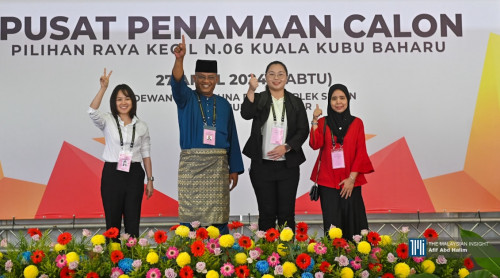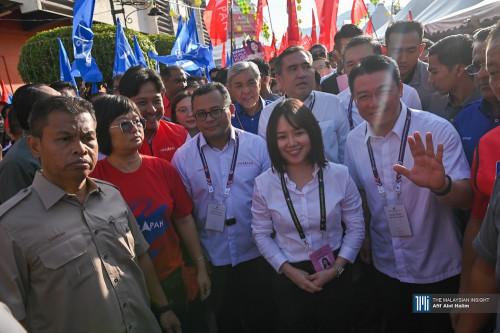IN the spirit of free speech, the Asean Human Rights Cartoon exhibition hosted by cartoonist Zunar and NGO Hujjah Ehsan kicked off on a high note yesterday. It highlighted the importance of accountability among respective leaders of Southeast Asia.
Around 100 political cartoons by 37 participating cartoonists calling out abuse against civil liberty in their respective countries were released on www.craftora.com to raise the need for regional democracy.

The month-long digital exhibition, in partnership with The Vibes, saw high-profile guests officiating the event. Among those on the panel of speakers present were opposition leader Datuk Seri Anwar Ibrahim, The Wahid Institute director and daughter of former Indonesian president Gus Dur, Yenny Wahid and Human Rights Watch Asia deputy director Phil Robertson.
“To all those participating in the event, the Asean cartoonists across, I must note and commend them for being the warriors that they are. They are brave for doing the hard-hitting cartoons featured in this exhibition,” said Zunar in his opening speech.
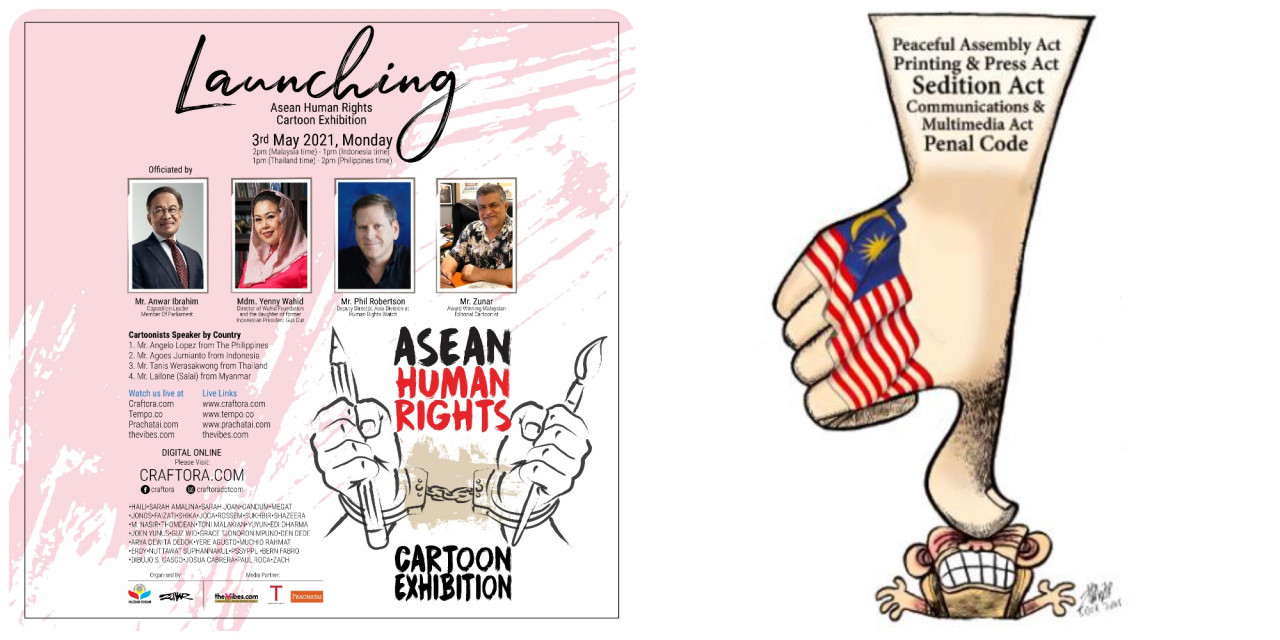
Citizens broken down by corruption and tyranny is the driving force behind the initiative spearheaded by Zunar, which gained widespread support from his peers across borders fighting a similar cause.
“As we celebrate Press Freedom Day, it is important to be doing this event with the exhibition featuring cartoonists all over the region pointing out what we all know. Asean governments are increasingly violating human rights while simultaneously diminishing respect for democracy,” said Robertson as the first speaker.
“I’ve been given frankly an impossible task to try and update the situation on human rights across the region in approximately a short time, but I will do my best."
“Sometimes one has to laugh because the alternative is a crime...” – Phil Robertson
The Asean spectrum
“A number of years ago, back in the ‘dark ages’ of 2015, when Malaysia had the government of the then prime minister Najib Razak, saying anything critical of his office (or anything with regards to the 1MDB) was enough to get you charged for sedition.
“Human Rights Watch wrote a very tough critical report entitled ‘Creating a Culture of Fear: The Criminalisation of Peaceful Expression in Malaysia’. At that time, Zunar had a dozen cases against him. I had the appropriate idea of getting him to do the cover, to which he obliged.
“We all thought the days of the sedition act and other rights-abusing laws in the country was finally going to be over. But fast forward with the government of the day, under prime minister Muhiyiddin Yassin, we are back at the start – a government that does not have a sense of humour and does not understand the freedom of expression or human rights.
“Just recently, we saw cartoonist Fahmi Reza (previously imprisoned for his satirical poster presentation of Najib as a clown) now in trouble for putting together a great Spotify playlist. I have to say – somewhat tongue-in-cheek since we are laughing at authoritarian silliness – that I am jealous of how talented Fahmi is.
“Sometimes one has to laugh because the alternative is a crime,” said the deputy director.
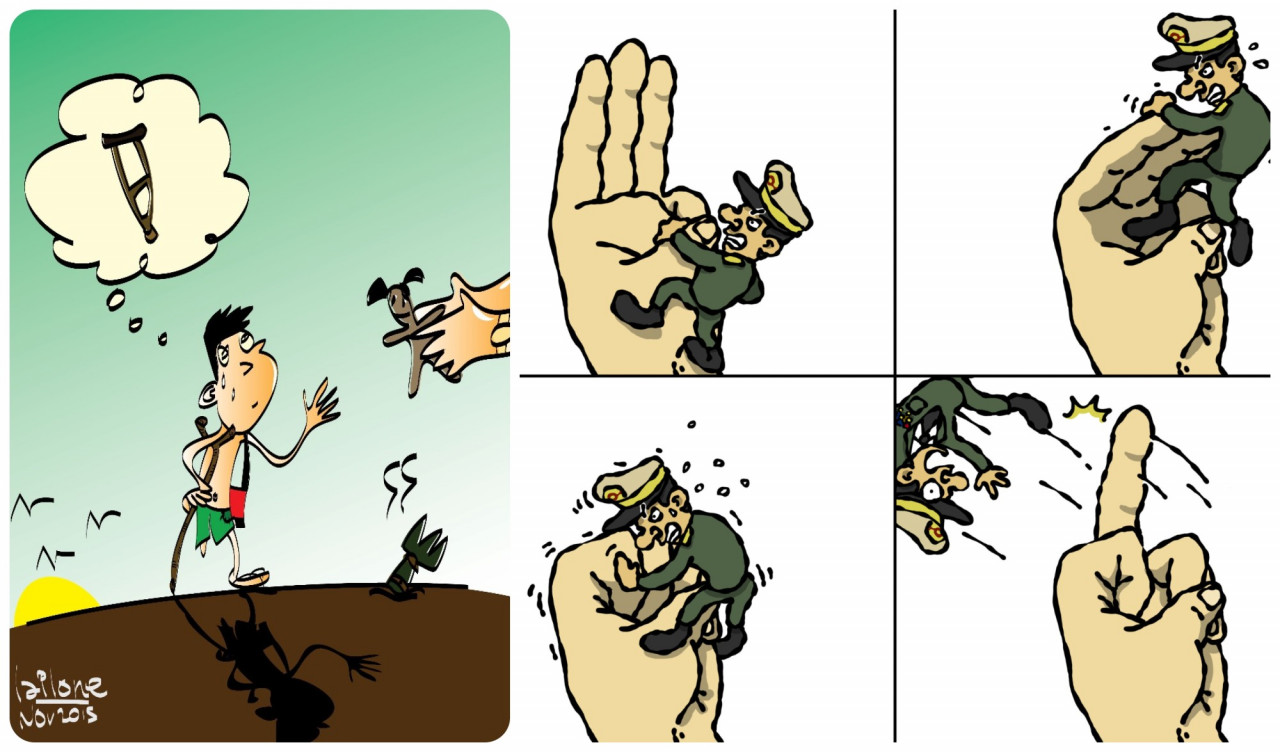
“I can say that certainly in the case of Malaysia where a prime minister used a pandemic to derail a democracy by suspending the parliament, and then fails to make progress on containing Covid 19 but works overtime to jail anyone who dares to criticise them.
“Malaysia is in fact going back to the battle of Najib’s style of governance. Not surprising if we remember that Muhiyiddin was Najib’s deputy for many years.
“Having said so, what is happening in Myanmar (Burma) for instance makes what happens in other parts of the Asean look pale in comparison,” he added.
Robertson went on to highlight the situation of neighbouring countries. Notably the alleged atrocity of lese-majesty in Thailand. And the dire situation in Myanmar where the junta leader (Min Aung Hlaing) is busy “doing an impression of Donald Trump, attacking and overturning journalists by calling them enemies of the people”.
For the latter, he noted that the Assistance Association for Political Prisoners: AAPP reported that 765 people have been shot down by the military police since the Burmese generals launched their coup on February 1 this year. Over 4,000 people have been arrested, more than 3,000 people are imprisoned (awaiting trial) and another 1,000 or so in hiding as they are being pursued by the authorities.
We have political leaders who are afraid of losing their political base, and simply let groups (non-state actors behind community movements against the minority) run rampant and create havoc in the society." – Yenny Wahid
“Quite clearly a massive crackdown and brutal violence are underway in Myanmar,” noted Robertson. He added: “with the civil unrest you can see a lot of cartoons now coming out on Twitter, and now through this exhibition”.
The participating Burmese cartoonist for the Asean Human Rights Cartoon Exhibition was not able to be present for the launch event due to the complexities of the condition in the country.
“We need to be able to laugh, to ridicule and poke fun at these leaders who far too often are abusing rights, corruptly taking care of their friends and their cronies. There is a crisis in governance, and we need the cartoonist to remind us to rededicate our efforts of where things can be improved”.
Helpless political figures
Following the discussion with another strong eye-opener on human rights, Yenny highlighted the bane: “how the world understands human rights is not as easily understood as before – it was very clear back then on what and who violates it. It was much easier to point fingers at certain actors, and then have the world’s police coming to the rescue.
“Now it is much more difficult and complex, seen through the actions and speeches we see today.
“We have political leaders who are afraid of losing their political base, and simply let groups (non-state actors behind community movements against the minority) run rampant and create havoc in the society.
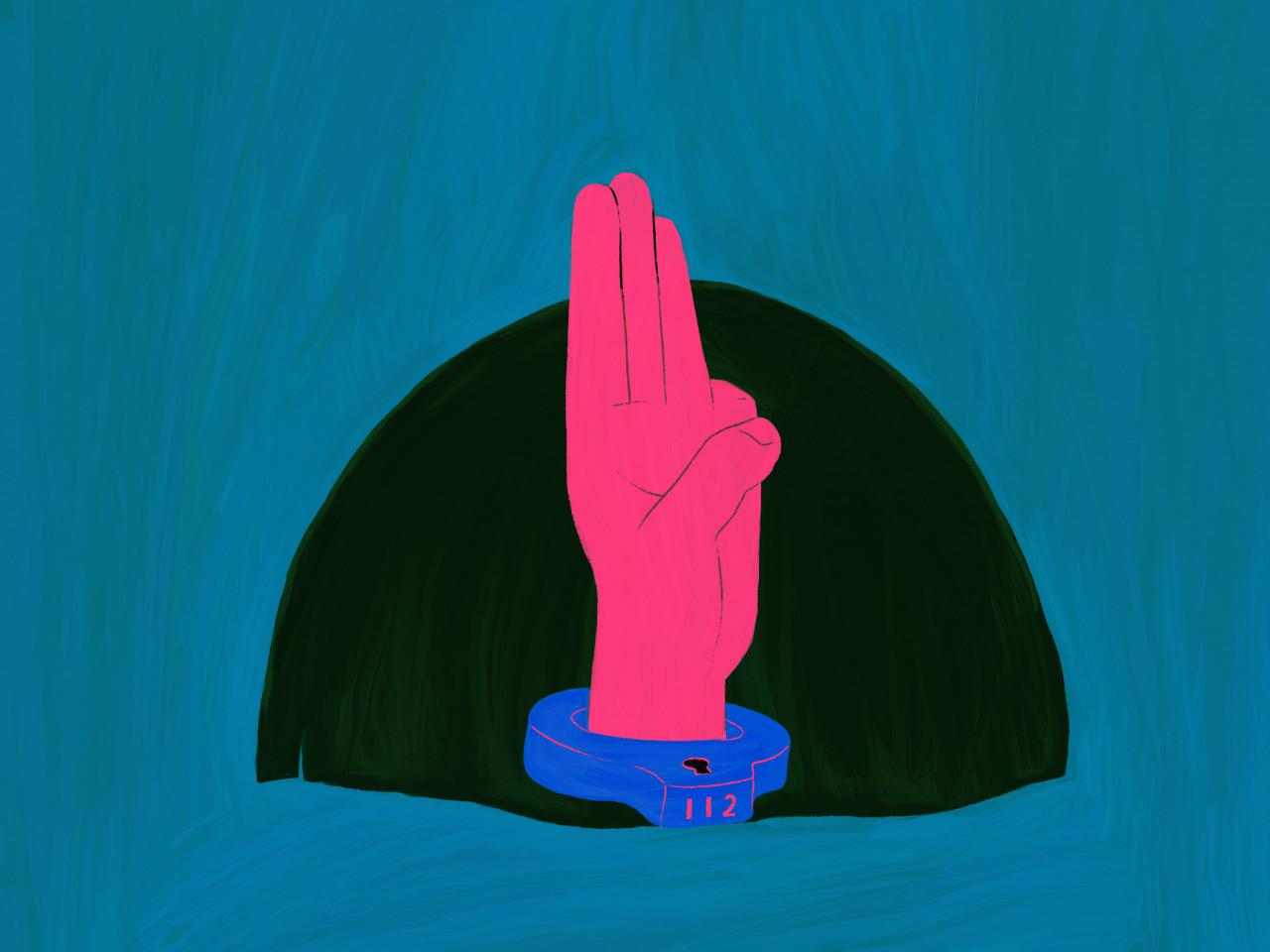
“This kind of dynamic is prevalent in Indonesia, where the state actors become helpless due to a particular groups’ influence. We see them coming up to the front and centre and claiming to be the ‘state’ in terms of how they want the society to be run.
“Separately, we also do have helpless political figures that try to handle issues faced by the minority, but efforts get shot down when cases are being committed against the dignity of minorities regardless”.
Yenny gave an example of how president Jokowi spoke out against anti-LGBT rhetoric but raids and arrest were still being made by police, “simply violating the community’s basic rights”.
“It is not illegal in Indonesia for one to be gay, but we see attempts being made in parliament, or by Islamic-based parties, trying to criminalise those who are. This type of contradiction does happen even when the state has the correct rhetoric, which it is seen as a way for a particular group to exert dominance within a society.
“Because of the landscape and geographical situation where some provinces are predominantly populated by a certain religious background, we will see a phenomenon of the majority over the minority.
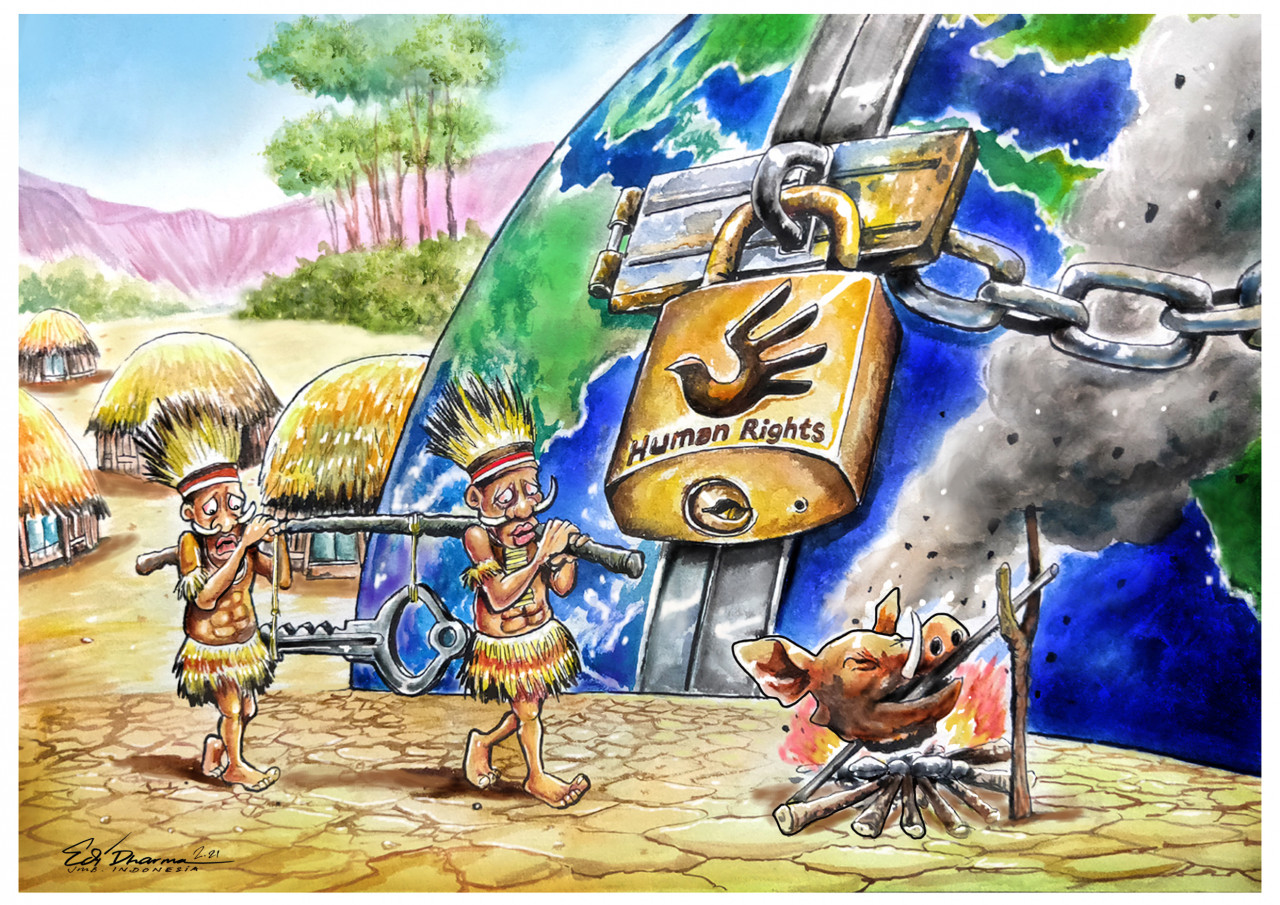
“Interestingly, it is not just non-muslims facing this predicament. For example, in the issue of places of worships. Muslims in the predominantly Christian population of Papua face challenges to build a mosque, similarly to how it is hard for non-Muslims to build a place of worship in the Muslim majority Java.
“Of course, the government is not doing enough to remedy the situation."
Elaborating on the issues in Papua, which most cartoons for the exhibition touched on, “we see violations of human rights and killings happening – which are classified into three (killings); i) by the Indonesian state apparatus ii) by the freedom movement iii) among different ethnic groups.
“Cultural empowerment must be expressed in poetry, theatre, cinema and in cartoons." – Anwar Ibrahim
“Killings carried by the freedom movement is higher in terms of numbers. And it seems like violence is the currency for all (to gain influence and power) when it comes to the state of the matter there,” said Yenny.
She added that it is a tragic irony that such a rich mineral province like Papua has low indicators of human development.
Freedom and democracy through cartoons
“The media and the press, here within the context of cartoonists, have emerged with such vibrancy and ferociousness in articulating views not confined to human rights but also extending to the issue of freedom,” said Datuk Seri Anwar Ibrahim during his speech.
“At times we find ourselves in the contradiction of having to fight (in the past) against the Dutch, British, etc, for freedom and democracy, the dignity of men and women, but now having to struggle to bring back the ideals our forefathers promised,” he said.
“It is interesting to note that I agree with the cynicism expressed by Yenny. Unfortunately, I am also covered under this political title and sometimes I hate it because people are going to be disillusioned.
“Too many contradictions, hypocrisy – you talk about freedom, but you trample on the rights of people. You talk about accountability, but you are blatantly corrupt,” added Anwar.
He stressed that in the Asean region, there is still no democratic accountability. “Institutions must be independent, the rights of people must be respected, expressions of cartoonists have to be honoured.

“For Fahmi’s sake, he used to tickle me once or twice, but I am OK with it because it is his way of expressing himself and I actually tweeted on his cartoon before. After all, it makes you reflect and realise that the ‘so-called leader’ listens to the criticism, sentiments, aspirations of the people.
“Cartoonists have this rare ability, often at our (politicians') expense, to present the issues of human rights that make you smile, laugh or scoff – but in the end the message is compelling,” shared Anwar.
“I know Zunar, and all other cartoonists suffered primarily because of this and went on trials. Sometimes I feel ashamed why our societies and countries must resort to such atrocities, even against cartoonists.
“When you talk about freedom and democracy, but you do not respect art or creativity, then how can a country be culturally vibrant?
“Cultural empowerment must be expressed in poetry, theatre, cinema and in cartoons. You cannot have such vibrancy with such an oppressive view. You must respect creativity even on issues that you find sensitive. That is what freedom entails,” he added, which closes the launch with a reel to release the cartoons for official public view. – The Vibes, May 3, 2021
*View all cartoons submitted for the Asean Human Rights Cartoon Exhibition on the digital art gallery at www.craftora.com until May 31. Revisit the speech of the panel on Craftora’s FB Live



